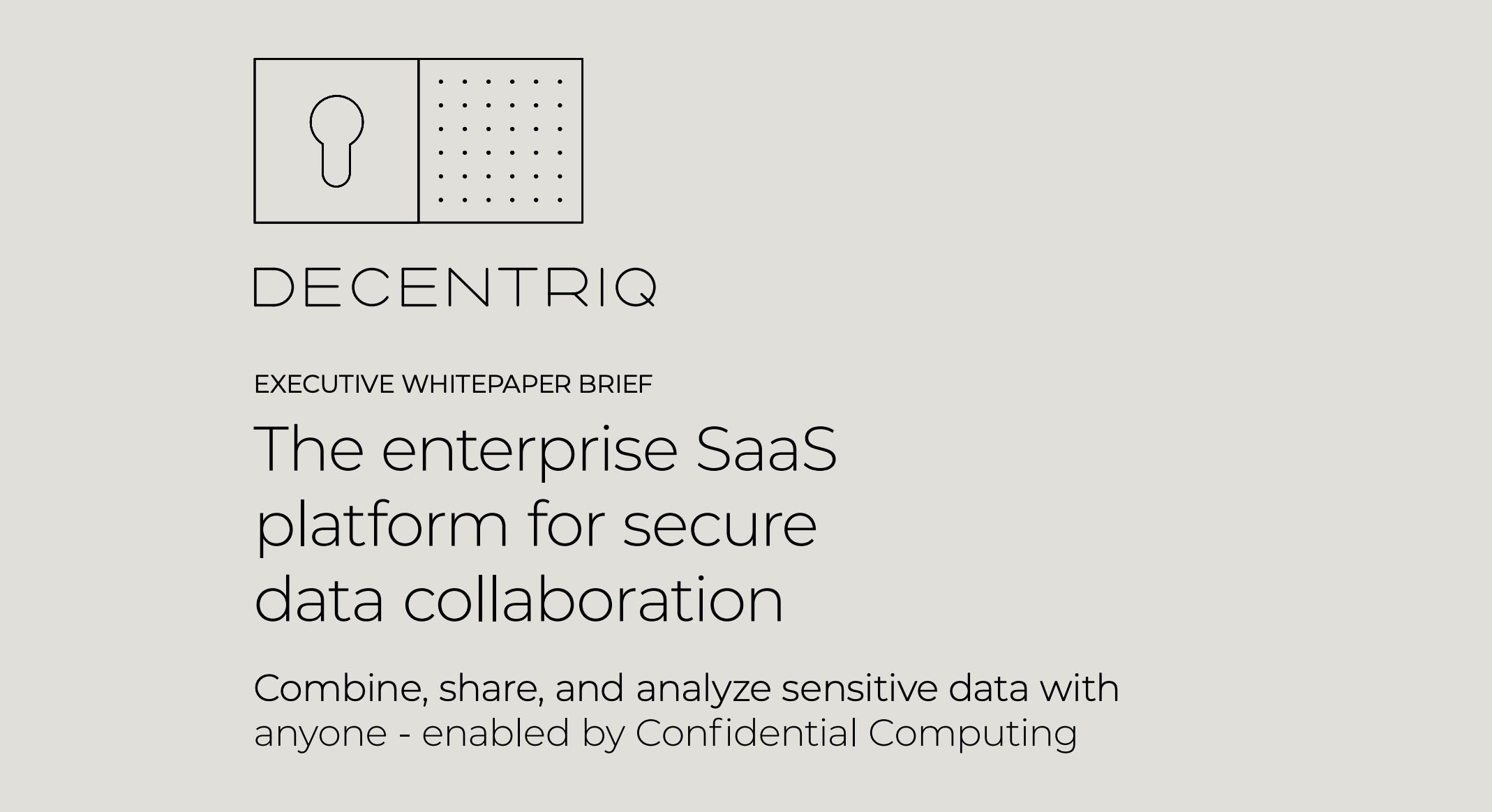What is a data clean room?
.jpg)
This article explores the definition, purpose, and applications of data clean rooms.
Your guide to reducing wasted ad spend using first-party data
An estimated 23-56% of ad spend is currently wasted (and that’s before third-party cookies are completely deprecated). So how can brands ensure they’re reaching their ideal audiences at a time when consumers expect more personalized — yet privacy-preserving — advertising experiences than ever before?
.jpg)
Data clean rooms (DCRs) are specialized environments designed to ensure data privacy and compliance while enabling secure data collaboration. In an era where data is often an organization's most valuable asset, this technology unlocks new sources of it.
This article explores the definition, purpose, and applications of data clean rooms.
Data clean room: Definition
A data clean room acts as a neutral environment enabling organizations to collaborate on data. Collaborating partners can glean insights from data without actually sharing it, thus safeguarding sensitive information. All parties can precisely control how their data is used, and these limitations are strictly enforced by the data clean room environment. This neutrality enables collaborators to maintain compliance with regulations like the General Data Protection Regulation (GDPR).
Why do organizations choose data clean rooms?
This technology meets the challenges in accessing and collaborating on data. The main challenges here include:
Collaboration and growth
Companies across different sectors are looking to use data effectively for diverse use cases and collaborative efforts. Motivations for this span from unlocking new possibilities to refining long-standing business processes.
These are strategic aims that companies have on their agendas, and they’re often integral to future growth. They would likely already be underway if not for the privacy and compliance constraints that currently limit their execution.
Privacy and compliance
The most commonly cited hurdle for businesses looking to put their confidential data to use or collaborate on it with other organizations is compliance regulations. These regulations are designed to protect privacy and ensure ethical data handling. They often necessitate stringent measures that can limit optimal use of certain types of information.
Organizations also have their own reasons for wanting to collaborate on data with other businesses without those other businesses being able to directly see the data. This may be driven by a need to protect insider information, maintain competitive advantages, or adhere to internal policies governing data confidentiality.
As a result, establishing secure data collaboration frameworks, such as data clean rooms, becomes crucial. These frameworks play a key role in enabling cooperation while safeguarding sensitive organizational interests. Integrated purpose limitation – only using clean rooms for the specific reasons laid out prior to initiating data collaboration — also makes it easy to ensure compliance.
How do DCRs work?
While types of data clean rooms vary based on their features and abilities, they all operate in essentially the same way. Here's a typical workflow for an organization using this technology to unlock insights without sharing data sets:
- Data upload: Both parties load their data into the DCR.
- Anonymization: The clean room renders the data anonymous, making it impossible to reveal personally identifiable information (PII).
- Secure analysis: Each party can analyze the combined data securely, gaining insights without compromising privacy.
- Access control: Strict controls ensure only authorized users can work with the data, maintaining security throughout the process.
.png)
What applications do DCRs have?
To demonstrate how data clean room environments work, let's examine use cases in two industries: Advertising and healthcare/life sciences.
Data clean rooms in advertising
In the media and advertising industry, data plays a vital role in targeting and delivering personalized ads to consumers. However, growing concerns over privacy and the rise of data protection regulations have forced advertisers to rethink their strategies. This is where data clean rooms come into play. Here are some of the main applications of DCRs for advertising:
1. Insights
Data clean rooms allow advertisers to collaborate with various data partners, including publishers, without sharing individual personal data. This way, they can reach the most effective audiences in the publisher's reader database.
2. Measuring cross-platform campaign effectiveness
Marketers can use data clean rooms to analyze data from diverse sources throughout the customer journey. This facilitates a more accurate measurement of ad campaign effectiveness.
3. Building consumer trust
By using data clean rooms, advertisers can show a commitment to their customers’ data privacy. This is crucial in an era where data breaches are commonplace and data protection regulations are becoming stricter.
DCRs in healthcare and life sciences
In the healthcare and life sciences sectors, data is not only valuable but also incredibly sensitive. Patient data, medical research, and clinical trials all require a high level of security and privacy. Data clean rooms offer a solution enabling data collaboration without compromising these critical aspects. Let's examine the main use cases of DCRs for this sector:
1. Advancing medical research
Medical researchers can collaborate on and analyze patient data from different healthcare providers within a data clean room. This allows for the identification of trends, patterns, and potential breakthroughs without exposing patient identities.
2. Drug development and clinical trials
Pharmaceutical companies can collaborate securely with research organizations on drug development and clinical trial results data. This accelerates the development of new treatments while ensuring data privacy compliance.
3. Precision medicine
Data clean rooms enable the aggregation of genetic, clinical, and demographic data to advance the field of precision medicine. This can lead to tailored treatment plans for individual patients while safeguarding their sensitive information.
Alternatives to data clean rooms
While various alternatives exist for safeguarding data privacy, data clean rooms offer a unique combination of advantages.
For example: Walled gardens and contextual advertising, among others, provide valuable tools for protecting data privacy while collaborating in the advertising space. Trusted collaboration environments and trusted research environments help make data collaboration possible in the healthcare sector.
But data clean rooms built specifically for privacy-conscious industries — like the two outlined in this article — provide a highly effective solution while consistently complying with data protection regulations. They also encompass a broader range of functionalities than alternative options, making them well-suited for diverse applications. This is good for balancing data use and privacy, helping organizations manage data in a regulated environment.
Which factors to consider when selecting a data clean room solution
Selecting the right data clean room solution is a critical decision that demands the careful consideration of several factors.
First, compliance with any relevant data privacy regulations, such as GDPR, is paramount. The chosen solution should offer the right combination of robust privacy controls, data anonymization techniques, and audit capabilities to ensure compliance.
Scalability is another crucial factor. The data clean room should be able to handle both current data volumes and potential future growth.
Depending on their specific data collaboration and privacy requirements, different types of DCRs will be more or less suitable. For example, some platforms include out-of-the-box, no code variants for standard operations. Others specialize in flexible solutions for organizations that want to customize (and can invest in) data science resources to meet their needs. And some data clean room providers offer both of these options.
Additionally, organizations should take into account ease of integration with their existing data infrastructures. This affects the ability to collaborate with data providers and stakeholders effectively.
Decentriq has included all these factors into the design of our data clean rooms from the ground up. Contact our team to discover how data clean rooms can help your organization unlock and collaborate on valuable data.
References
Your guide to reducing wasted ad spend using first-party data
An estimated 23-56% of ad spend is currently wasted (and that’s before third-party cookies are completely deprecated). So how can brands ensure they’re reaching their ideal audiences at a time when consumers expect more personalized — yet privacy-preserving — advertising experiences than ever before?
.jpg)
Related content
Subscribe to Decentriq
Stay connected with Decentriq. Receive email notifications about industry news and product updates.

.jpg)

